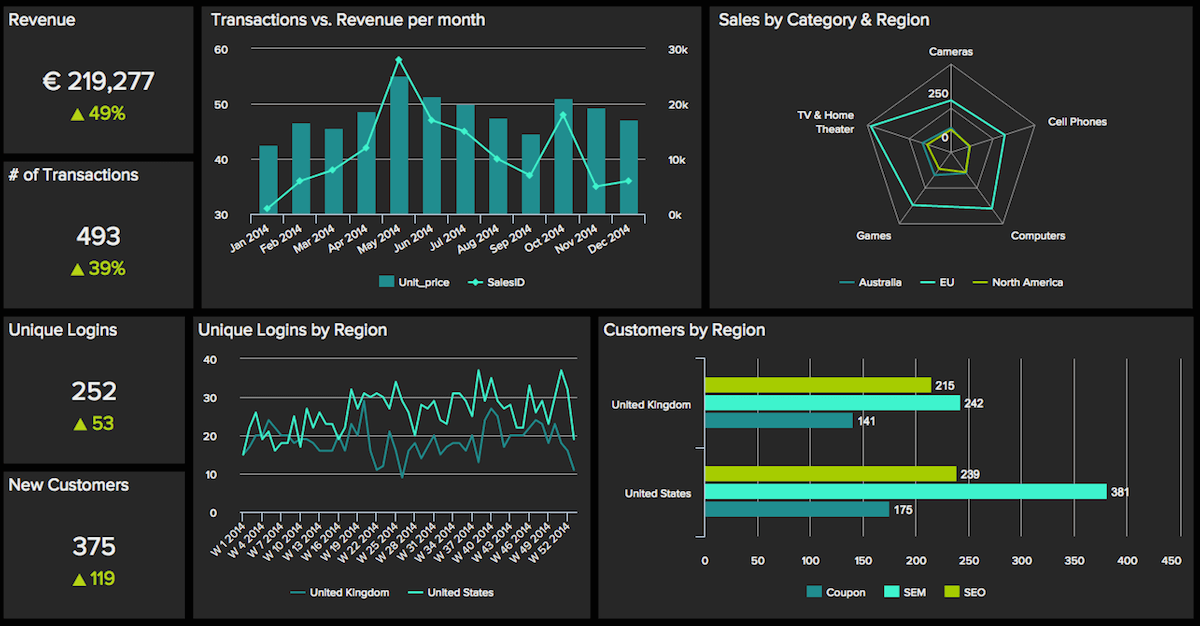Over the years, there have been many changes in the way companies collect and process data. Moving from large boxes filled with paper files and indices, digital data storage finally emerged in the 1960’s. Punch cards were replaced by mechanical hard disks, and both storage and processing capabilities increased exponentially. A decade later, relational database management systems began to emerge, enabling relationships between different databases and tools that allow for sophisticated pattern recognition. Nowadays, companies increasingly invest in sophisticated business intelligence systems, as data is key to gain better customer insights.
But what do we know about business intelligence systems? We asked Erasmus University students to find out the general opinion. It appeared that most students have either no clue or think it is highly complicated.
So allow us to elaborate: Embedded BI, or embedded analytics, allows companies to add BI software features and integrate them with existing applications. Many software providers now specialise in offering these dashboards and reporting tools to facilitate decision making and evidence-based management. The interactive display of data and key performance metrics allow for real-time reporting and provides valuable insights into business trends. Some of the companies that are using embedded BI successfully are Procter & Gamble, Uber and UPS, but smaller companies are increasingly adopting these solutions as well. Dashboard solutions and similar tools are clear game changers, but why exactly is the technology so disruptive? We asked a BI consultant to find out.
Dr. Beatriz Waltrick, a Business Intelligence consultant at Quintus consultants b.v, explained how data warehousing and BI facilitates collecting data and comparing results over time. For example, she explains how the purchase of yoghurt at the supermarket is being registered and shared throughout the whole supply chain, all the way back to the farmer. Furthermore, she mentioned that BI disrupted the industry by enabling supply to follow real-time customer demand, thereby increasing efficiency and reducing waste, which prevents occurrence of the bullwhip effect. Moreover, Dr. Waltrick predicts that BI can further revolutionise information processing and generate new markets, since companies can sell products internationally according to data on uncovered demand. She expects that its impact will break through the whole production chain from customer to supplier, by combining different information systems into one single dashboard.
Finally, we expect Artificial Intelligence to play a role in the future of BI dashboards. AI allows systems to recognise patterns in a smart and revolutionary way, thereby increasing accuracy in predictions and efficiency in finding relevant insights for businesses. Furthermore, as companies have already been investing in BI systems, we expect network effects to result in an oligopoly industry of information dashboards. However, this increasing integration raises ethical and security-related concerns. Current legislation is not up-to-par with the fast development of BI solutions, thereby posing a threat to privacy. A thorough assessment is necessary to ensure that the right people see the right data, and will continue to do so in the future.
References:
Birst. (2017). Data Driven Decisions: Benefits of Analytics Products. [online] Available from: https://www.birst.com/blog/making-decisions-with-data-the-benefits-of-creating-analytic-products/ [Accessed: 25 September 2017].
Computer History Archives Project. (2015). Computer Punch Cards – Historical Overview. [Online Video]. 4 October 2015. Available from: https://www.youtube.com/watch?v=YXE6HjN8heg&t=71s. [Accessed: 24 September 2017].
Does the future lie with embedded BI?. (2017). [Blog] Sisense. Available from: https://www.sisense.com/blog/future-lie-embedded-bi/ [Accessed: 25 September 2017].
Google. (2013). Google and NASA’s Quantum Artificial Intelligence Lab. [Online Video]. 11 October 2013. Available from: https://www.youtube.com/watch?v=CMdHDHEuOUE. [Accessed: 24 September 2017].
PwC. (2014). Data & Analytics helps executives make business-defining decisions better and faster. [Online Video]. 10 September 2014. Available from: https://www.youtube.com/watch?v=6naW6Kg23q4. [Accessed: 25 September 2017].

